AVS Forum Best of CEDIA 2017
September 14,2017
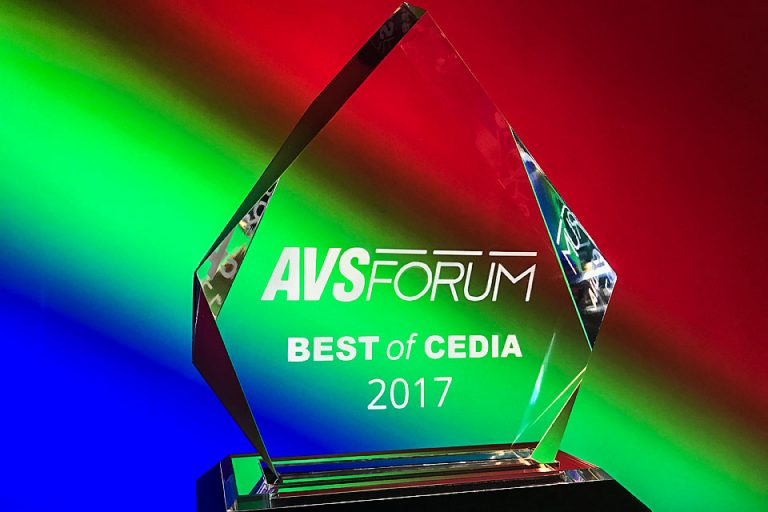
At CEDIA 2017, many great audio/video products were introduced, and many companies presented excellent demonstrations. But some of those products and demos rose above the rest, and we decided to recognize them with the new AVS Forum Best of CEDIA award. Senior Editor Mark Henninger and I selected 12 companies that showed something super-cool, something that really knocked our socks off, and we presented them with a crystalline trophy to commemorate their achievement at the show.
Lest you think the awards were paid for in some way, nothing could be farther from the truth. None of the winners knew they would be getting an award—heck, we didn’t know who the recipients would be until after we got to the show. The selection was based solely on our honest impressions of the performance, technology, and/or value represented by the products or demos we experienced for ourselves.
So, without further ado, here are the winners of the AVS Forum Best of CEDIA 2017 awards:
Best Projectors: Sony VPL-VW285ES, VPL-VW385ES, VPL-VW885ES
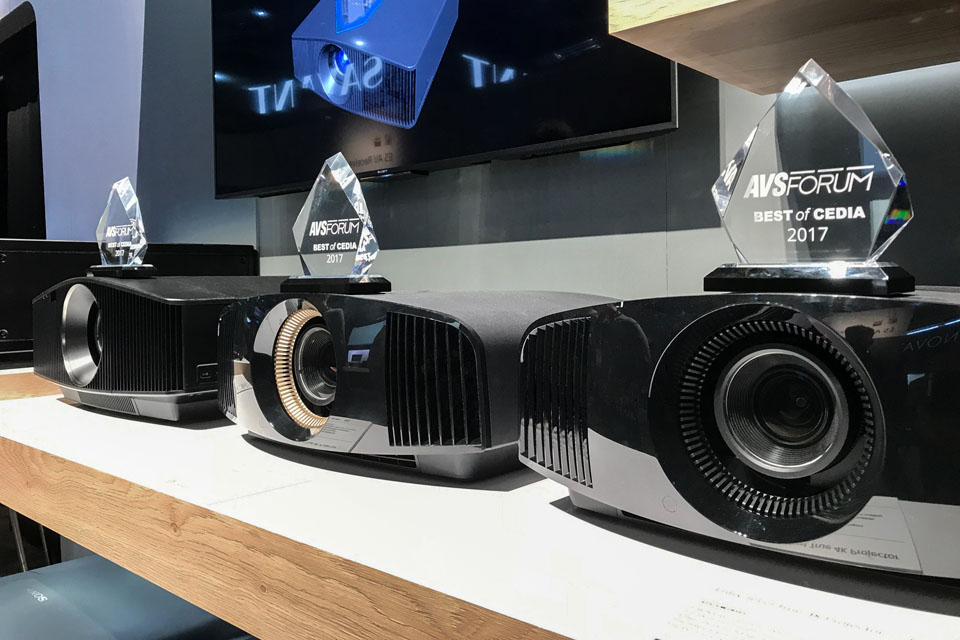
Sony really knocked it out of the park with three new projectors, all with true 4K resolution and HDR capabilities. Perhaps most impressive is the VPL-VW285ES, which offers all this for only $5000! The step-up VW385ES adds lens memories for $8000, and the VW885ES incorporates a laser-phosphor light engine for $25,000. They looked mighty good in various demos, and all deserve to be recognized as among the best of CEDIA 2017.
Best Budget UST Projector: Epson Home Cinema LS100
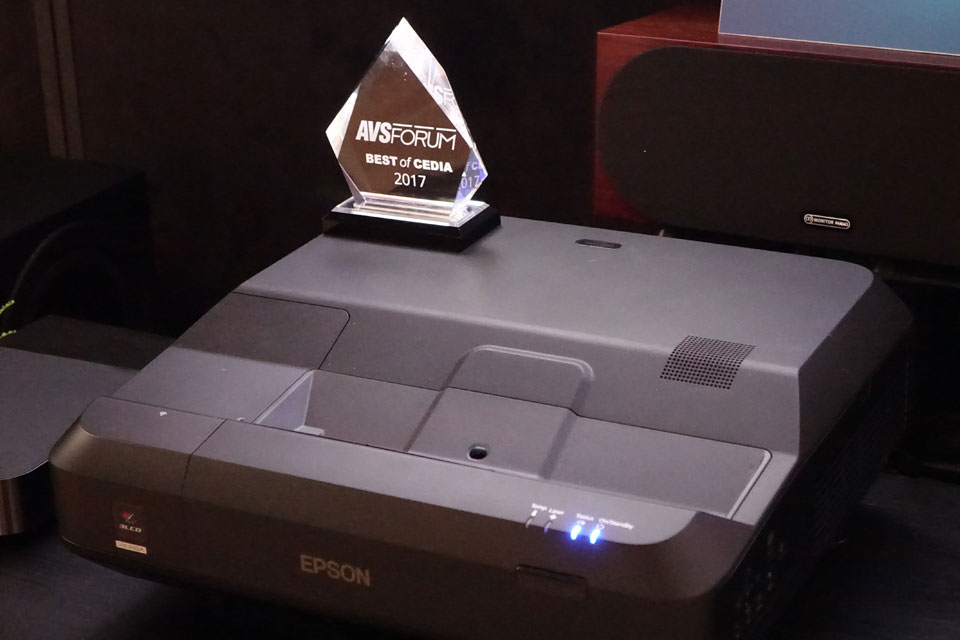
Ultra short-throw (UST) projectors are great when you want a giant screen but can’t accommodate a conventional projector. However, most are very expensive. Epson broke that mold at CEDIA 2017 with the new Home Cinema LS100, which sports laser-phosphor illumination for only $3000. Granted, it’s 1080p with no HDR, but that matches most content available today. And it can accept UHD signals, downscaling them to HD. Try finding a 100″ flat panel for $3000—you won’t.
Best Retractable Screen System: Stewart Gemini
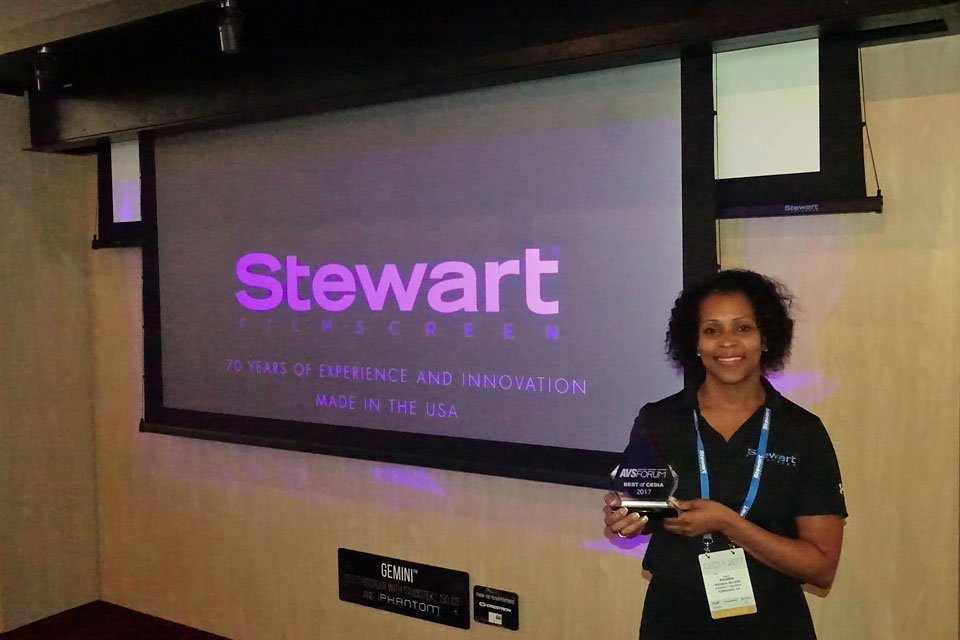
Should you get a white or ambient light-rejecting screen? 16:9 or 2.35:1? With the Stewart Gemini, you can have your cake and eat it too. This ingenious dual-roller retractable-screen system houses two materials in different aspect ratios—say, a 2.35:1 StudioTek 130 for dark-room movies and a 16:9 Phantom ALR screen for watching sports during the day. Select the most appropriate screen for either situation with the touch of a button. How cool is that?
Best LED Video Wall: Leyard TWA0.9

Projectors are great, but they have their limitations—in particular, low brightness compared with flat panels, which makes HDR especially difficult. One solution to this problem is an LED video wall. The best example at CEDIA this year was the Leyard TWA0.9, which measured 162″ diagonally with 4K/UHD resolution and a peak brightness up to 600 nits. On the downside, this technology is still extremely expensive—around $400,000 for that screen. But there’s no way to get anywhere near that much brightness from a projector, no matter how costly!
Best Calibration Technology: Samsung/SpectraCal Auto-Calibration
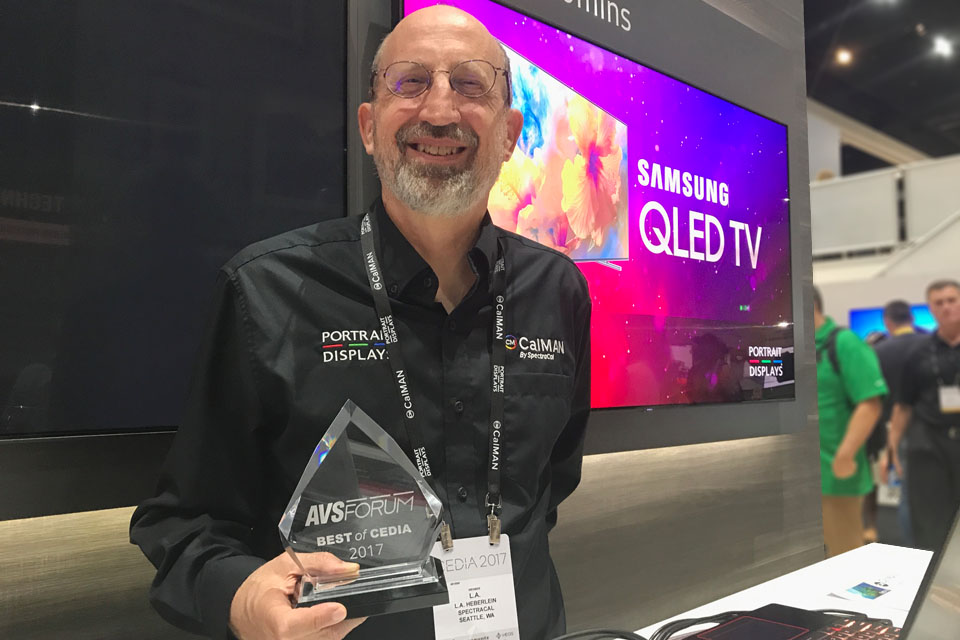
To get the best possible performance from any display, it should be fully calibrated, which can take hours and cost hundreds of dollars. At CEDIA 2017, Samsung and SpectraCal demonstrated a brilliant alternative—automatic calibration of any Samsung TV from the MU6300 on up using SpectraCal’s CalMan software. Instead of hours, the automatic calibration takes only 20 minutes or so and requires no special skill—only the software running on a Windows computer and a colorimeter. This is a huge leap forward that I hope other TV manufacturers take.
Best Fiber-Optic HDMI Cable: Fibbr Ultra Pro
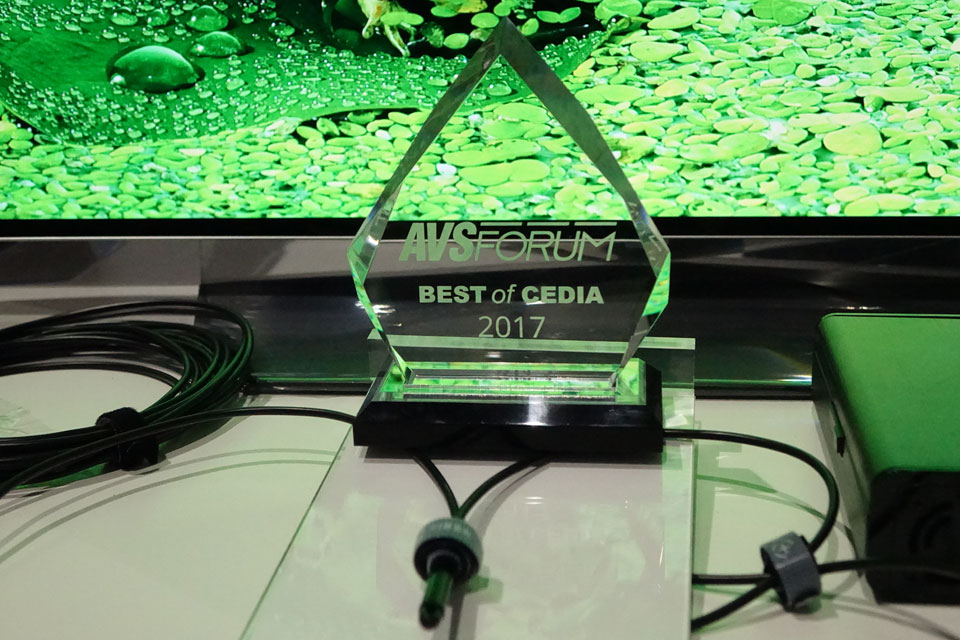
With the advent of 4K and HDR, the amount of data conveyed by HDMI cables has increased dramatically. As a result, passive copper cables must be shorter to avoid data loss. One solution is to convert HDMI signals to optical pulses and send them through fiber-optic cables, which can be much longer. The Fibbr Ultra Pro is ISF-certified to reliably carry 18 Gbps up to 200 meters. Even better, its electronics draw power directly from the HDMI ports. It’s expensive, but it’s a great way to transmit HDMI signals over long distances that copper cables can’t touch.
Best Bookshelf Speakers: Definitive Technology Demand Series

Definitive Technology can always be counted on to deliver high-performance speakers at down-to-earth prices, as demonstrated by the new Demand series of bookshelf speakers. All three models—D7 ($499/pair), D9 ($749/pair), and D11 ($999/pair)—feature an offset 1″ waveguide-mounted aluminum-dome tweeter, polypropylene woofer, and a passive radiator in the D9 and D11. Mark Henninger was highly impressed with the performance of these gems as well as their striking minimalist design.
Best Soundbar: Creative X-Fi Sonic Carrier
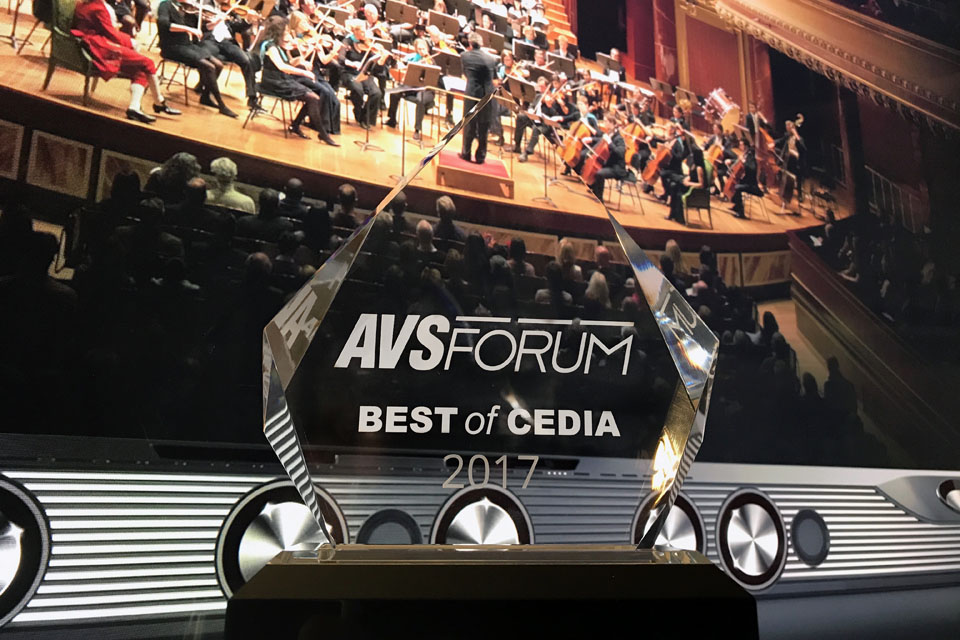
Mark Henninger was floored by this soundbar from a PC and gaming-products company. In fact, he unequivocally calls it the best soundbar he’s ever heard, period. The X-Fi Sonic Carrier reproduced a 5.1.2 Dolby Atmos soundfield with holographic fidelity, even on the open show floor with no walls or ceiling to reflect the sound. The included wireless subwoofer effectively renders the bass, and the built-in 4K Android TV serves as its own source. It ain’t cheap at $5800, but as Mark says, “My mind was completely blown.”
Best Budget Immersive-Sound System: Emotiva RMC-1, XPA Gen 3, Airmotiv
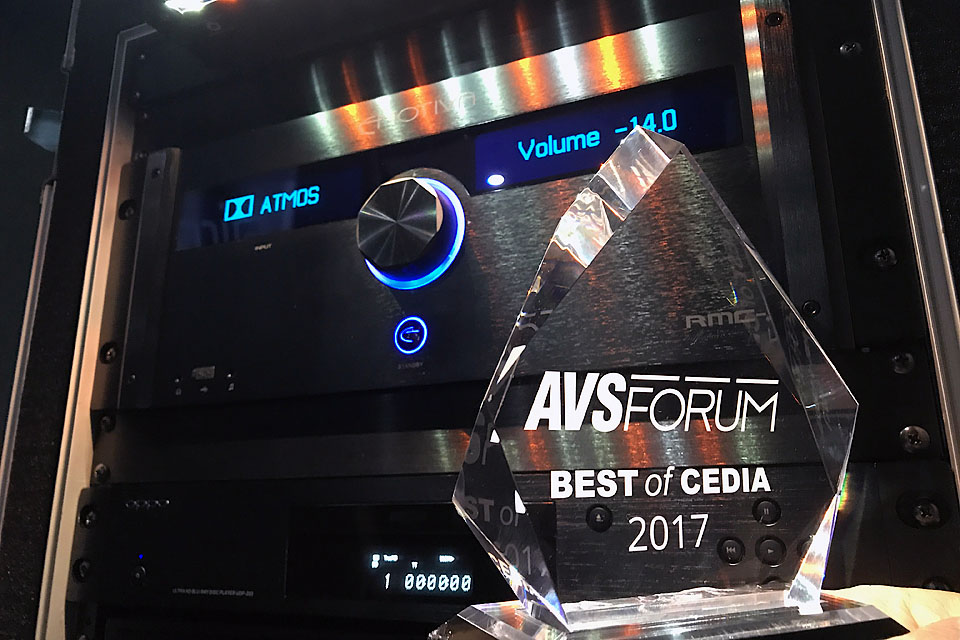
Emotiva’s long-awaited RMC-1 16-channel AV processor was publicly demonstrated for the first time at CEDIA. The 7.4.4 demo system also included a single XPA Gen3 modular power amp with three 200-watt mono modules and four 75 watt/channel stereo modules. The speakers included various Airmotiv models all around plus four custom height speakers. Aside from sounding superb, the cost for these products is unbelievable. As Mark said of the RMC-1/XPA Gen3 combo, “You’re talking about spending $7000 and then utterly blowing away every mass-market AVR that has ever existed—reducing them to smithereens in ways that can’t be discussed in polite company.”
Best Integrated AV Processor: StormAudio I.ISP 3D.16.12
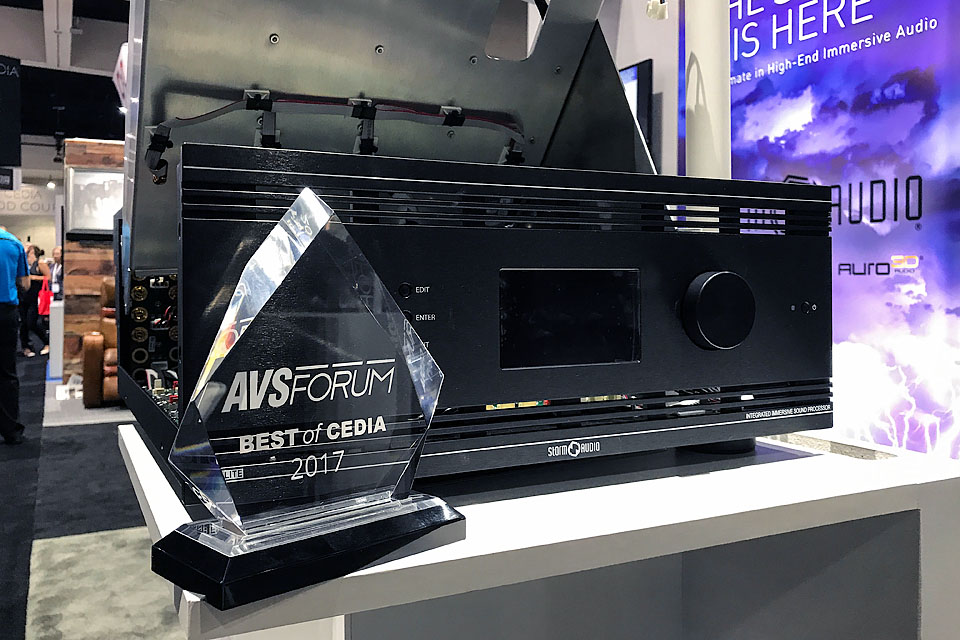
The StormAudio I.ISP 3D.16.12 seems to have created its own product category—a high-end AV processor with integrated amplification. It’s sort of a super AV receiver with capabilities that go far beyond any mere AVR. It provides 16 channels of processing with Dirac Live room correction along with 12 amp channels at 200 W/ch. In addition, it’s highly configurable, and it supports Dolby Atmos, DTS:X, and Auro3D immersive sound formats. The price tag is close to $16,000, which is substantial, but much less than other high-end AV processors that don’t come with their own amplification.
Best Sounding Demo: Starke Sound
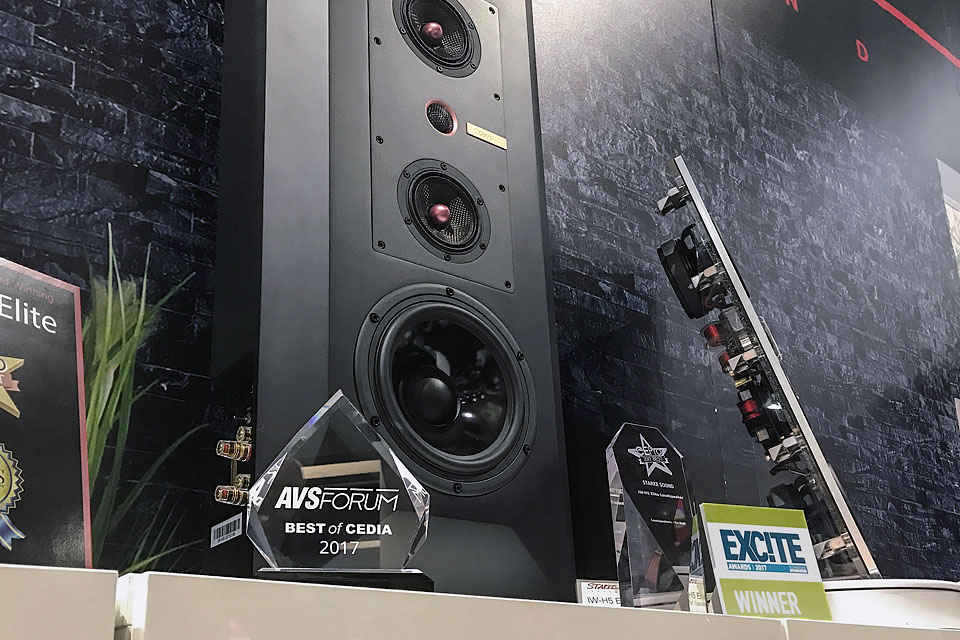
There were many fine-sounding demos at CEDIA 2017, but the 7.3.4 Dolby Atmos system assembled by Starke Sound was the best I heard. It created a cohesive, seamless soundfield in which I could localize none of the speakers, and the sound had a liquid quality that was very appealing. It was quite loud—1 dB over reference level—but the sound was so clean that even I didn’t mind. Bravo!
Best Overall Demo: Seymour-Screen Excellence, Audio Excellence, Wolf Cinema
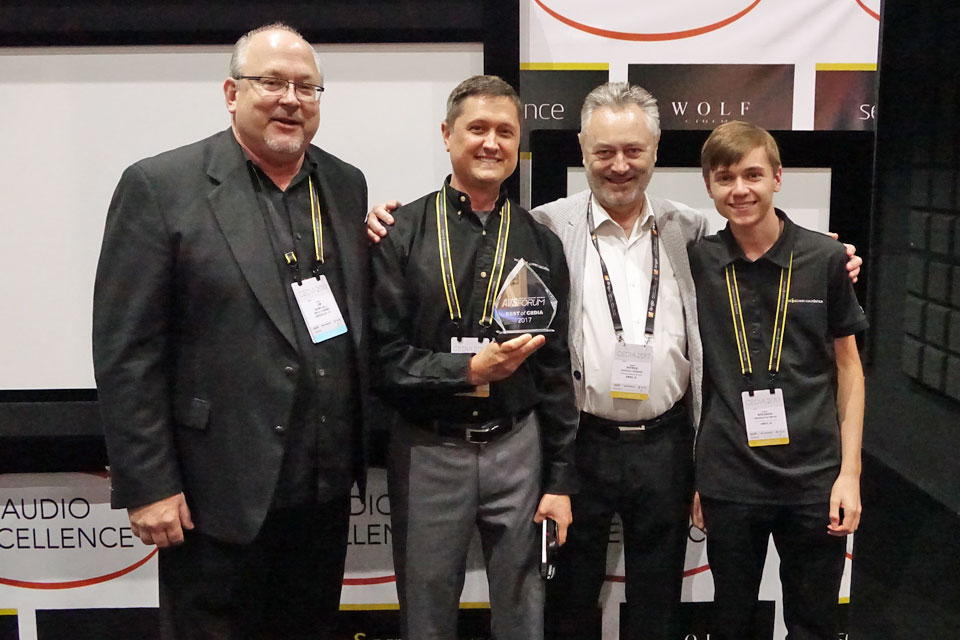
The best overall demo I experienced at CEDIA was presented by Seymour-Screen Excellence, Audio Excellence, and Wolf Cinema. The sound of the 7.2.4 Audio Excellence system was superb—loud but not fatiguing—and the Wolf TXF-5000 4K laser-illuminated projector produced the best image I saw at the show. That image was supported by the newly introduced Seymour-Screen Excellence Enlightor-Neo acoustically transparent screen measuring 142″ diagonally. I could have stayed in that room for hours!
There you have it—the AVS Forum Best of CEDIA 2017 awards. Congratulations to the winners! We look forward to seeing what new wonders are in store for next year, and you can be sure we will be there to bring it all to you on AVS Forum.



 CN
CN




 Back to list
Back to list America
America fibbr@everprotech.com
fibbr@everprotech.com



